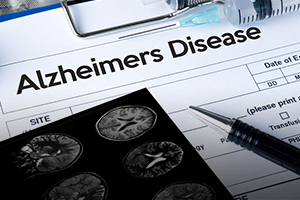Reversing Memory Loss
 It has long been assumed that the memory loss associated with Alzheimer’s Disease (AD) is permanent – that the clumps of protein accumulating in the brain destroy neurons, and therefore, the memories stored there. But new research suggests that memories are not lost; they’re simply harder to access. Furthermore, they may be able to be recovered.
It has long been assumed that the memory loss associated with Alzheimer’s Disease (AD) is permanent – that the clumps of protein accumulating in the brain destroy neurons, and therefore, the memories stored there. But new research suggests that memories are not lost; they’re simply harder to access. Furthermore, they may be able to be recovered.
In a study performed on genetically engineered mice, researchers developed a way to make neurons glow yellow when storing a memory and red when recalling one. They then created two sets of mice – one healthy and one with a condition resembling AD. Both sets of mice were then exposed to a lemon scent followed by an electric shock. One week later, when exposed to the same lemon scent, most of the healthy mice immediately reacted in anticipation of the shock, while less than half of the AD mice appeared to remember the link between the smell and the shock. In the healthy mice, the yellow and red neurons overlapped, indicating that the memory was recalled from the same area in which it was stored. But in the AD mice, different cells glowed red, meaning that they were recalling different memories.
More importantly, the team was able to stimulate the yellow memory-storing neurons in the AD mice by activating them with a blue laser, after which they responded normally to the lemon scent.
All of this points to the theory that memory is not lost, but may be “misplaced.” Just as music can sometimes reawaken memories in AD patients, targeted therapies such as deep brain stimulation may improve recall. The technique may also one day be used to help witnesses remember details of crime scenes, or enable us to tap into early childhood experiences.
For information: Christine Denny, Columbia University, 1051 Riverside Drive, Unit 87, Kolb Research Annex, Room 736, New York, NY 10032; phone: 646-774-7100; email: cad2125@columbia.edu; Web site; http://www.columbia.edu/